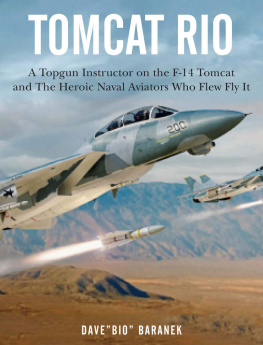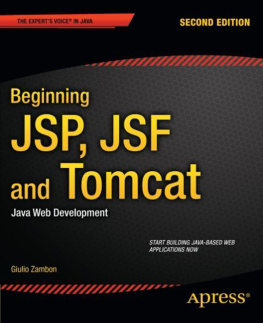


Copyright 2020 by Dave Bio Baranek
All rights reserved. No part of this book may be reproduced in any manner without the express written consent of the publisher, except in the case of brief excerpts in critical reviews or articles. All inquiries should be addressed to Skyhorse Publishing, 307 West 36th Street, 11th Floor, New York, NY 10018.
Skyhorse Publishing books may be purchased in bulk at special discounts for sales promotion, corporate gifts, fund-raising, or educational purposes. Special editions can also be created to specifications. For details, contact the Special Sales Department, Skyhorse Publishing, 307 West 36th Street, 11th Floor, New York, NY 10018 or .
Skyhorse and Skyhorse Publishing are registered trademarks of Skyhorse Publishing, Inc., a Delaware corporation.
Visit our website at www.skyhorsepublishing.com.
10 9 8 7 6 5 4 3 2 1
Library of Congress Cataloging-in-Publication Data is available on file.
Cover design by Moma Lin
Cover photo credit: Digital illustration by Dorian Dogaru
Print ISBN: 978-1-5107-4822-4
Ebook ISBN: 978-1-5107-4823-1
Printed in China.
The appearance of U.S. Department of Defense visual information does not imply or constitute endorsement.
To my beautiful wife, Laura.
BONUS FREE RESOURCES
This book comes with bonus free resources: private video interviews on my experiences flying in the Tomcat and instructing at Topgun, photos not used in the book, and more.
To gain access, register via the form on this web page https://fightson.net/bio/?utm_source=book
From time to time, youll also receive emails sharing new articles, videos, and photos. If this is not of interest, you can easily unsubscribe.
TABLE OF CONTENTS
Intel Brief:
The Tomcat Community, 1987
Intel Brief:
Callsigns
Intel Brief:
Monkey.
Intel Brief:
Air-to-Air Missile Comparison1987
Intel Brief:
Flight Deck Cycle and the Fuel Ladder
Intel Brief:
Facts and Opinions on the New Squadron Environment
Intel Brief:
The 569 Bulkhead Affair and LANTIRN
Intel Brief:
Operation Southern Watch

INTRODUCTION
Welcome to the real world of the F-14 Tomcat and the US Navy fighter squadrons that flew it! Exhilarating catapult launches6.5-g dogfights against F-16sreviewing the work of petty officers for a major inspectionbriefing at midnight for a 2 AM launchwatching Iranian airspace, knowing I could launch a missile at a hostile target up to one hundred miles awayand later, responsibility for three hundred peoplebarhopping with squadronmates in Key Westwatching the fireball from a 1,000-pound bomb we just dropped.
You get the idea.
This is my third book. In the other two I was in more structured environments: Naval Aviation training, junior officer in my first squadron, instructor at the now-famous Topgun school. This time Im in an environment that I can shape to a greater extent, on the ground and in the air. New freedoms, new consequences, new risks, new adventures.
Youve opened this book, youre reading this pageyou must have an affinity for Naval Aviation, or for flying stories in general. So do I! The one youre holding is not just about a career. Its also a tribute to the Grumman F-14A Tomcat.
When designed and introduced, the Tomcat was the Navys replacement for the F-4 Phantom II, which embodied the term a legend in its own time. No one knew Tomcats would serve for more than 30 years and become legendary on their own. We were proud to fly them and confident in their effectiveness, and it is an honor to contribute to the Tomcats legacy. But, I dont whitewash the story: Ill talk about system failures and challenges associated with keeping these jets flying.
Yes, some of these stories celebrate the Tomcats versatility and impressive capabilities and mention my own abilities, which were the product of years of training and experience, supported by my personal commitment. But some of these stories spring from questionable decisions or less-than-optimum situationsevents that made the biggest impression on my memory. Among hundreds of incident-free flights, moments like these are a part of almost any aviation experience. Naval Aviation, where an emphasis on safety has produced an incredible reduction in mishaps over the past fifty years, still presents a variety of circumstances that for an author is the gift that keeps on giving.
As I wrote this book, I thought about the many squadronmates, officer and enlisted, with whom I shared these experiences, but didnt happen to be involved in one of the stories. If youre one of those great people, I hope youll see yourself in this book and take pride in your service to this great nation.
So get into your flight gear, strap in, and one more thing:
Fly Navy!
CHAPTER 1
1,000-POUND MISSILE
FOX 3!
Trying to control the excitement in my voice, I transmit the code words. My left thumb presses a red button marked LAUNCH. And one second later a mighty AIM-54 Phoenix missile drops from the belly of the F-14 Tomcat fighter. I can almost feel the planes relief as its half-ton, million-dollar hitchhiker roars away with its tail on fire and its radar nose sniffing out the target ahead.
Id said those two words hundreds of times during my five years in the back seat of an F-14, flying as a RIO, a radar intercept officer. But those were training shots; nothing came off the jet. Before today, Fox 3 meant I had targeted the adversary and could have punched the red button as a role-playing enemy jet streaked toward me, our two speeds adding up to a closure rate of 800 mph, maybe 1,000, maybe more. In the debriefing afterwards, the code would serve as a marker as we reconstructed the action.
Not today. This time its totally different.
Im flying with Jeff Moon Mullen, a lieutenant with three years in Tomcats, one of the junior pilots in Fighter Squadron 2 (VF-2 in Navy terms). Im also a lieutenant, but a mid-level officer because its my second tour of duty in a fleet F-14 squadron. Moon is easygoing and unassuming, but very serious about his job. This missile exercise, called missilex, is a workout for me as RIO, but hes as focused as I am.
Im Bio. My last name rhymes with bionic, but that got shortened to Bio and it stuck.
Were in airspace designated for live missile launches, about 150 miles west of Los Angeles, with nothing below but the empty Pacific Ocean. Range control makes very sure that no other aircraft strays into the airspace. No ships or boats, either.
Weve arrived early and are orbiting at 300 knots until the C-130 Hercules cargo plane gets here with our target. Were shooting at a droneunmanned, of course; its a live missile exercise. Theres a detailed schedule, and everyone is very professionalthey do this all the timebut my internal clock is running about double speed as the drama builds.
Now the C-130 arrives and turns south. You know the feeling: all is running smoothly, somethings about to happenbut when? Were calmly circling, circlingand suddenly the intercept controller lights the fuse: C-130 is steady, heading one-four-zero. Bullet two-zero- five, your contact is three-one-seven at seventy-two miles. Red range. Recorders on.
Next page










